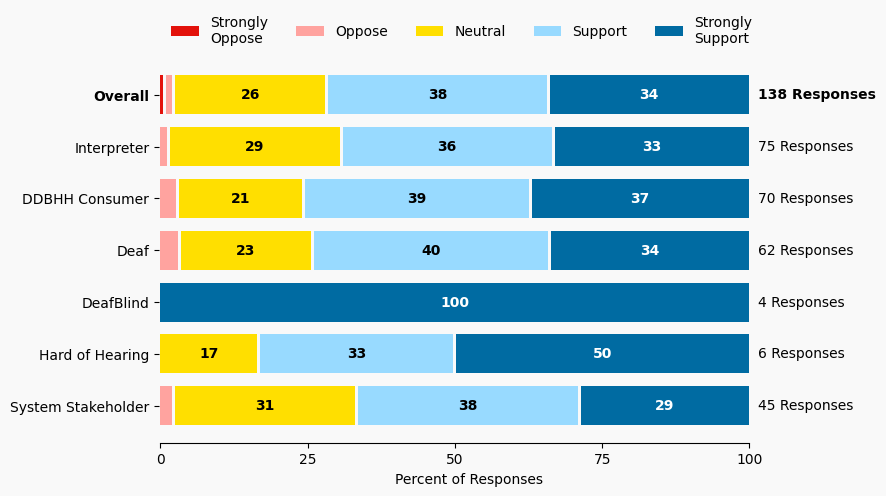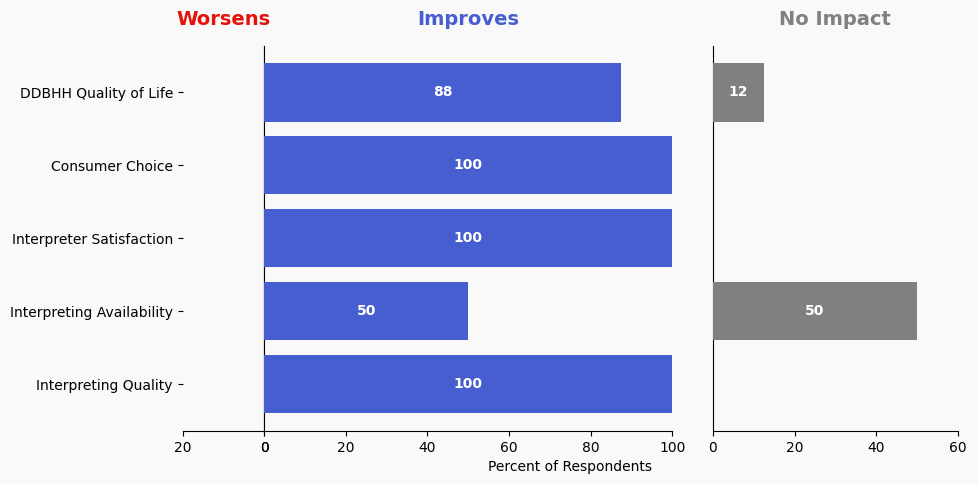2 Commission Host Self-Advocacy Training via Train-the-Trainer
Issue: Not all consumers are confident and comfortable with advocating for interpreting access.
Proposed Solution: Provide NAD’s Self Advocacy Training. Commission to request Corina Gutierrez from New Mexico Commission for the Deaf and Hard of Hearing to come to Minnesota for an in-person Train-the-Trainer. Develop further plan for Minnesotan DDBHH people who took the training to train community members on self-advocacy.
Expected outcome: Deaf consumers will be better educated and further empowered regarding their communication access rights, including self-advocacy, self-determination and how to work more effectively with ASL interpreters. Include how to get resolution to customer service concerns and grievances.
Who is impacted: Consumers, hiring entities
Update: Planning for this training is in process, and the training is being scheduled for spring 2025.
Timeline: 6 months
Note: Dendros Group is interested in supporting this work via some coordination and partial ficial sponsorship for Corina’s travel expenses.

Summary of Support Image Description
The stacked bar charts show how respondents rated their level of support and the total number of responses. The percentage for the five support levels is shown from left to right: Strongly Oppose (Dark Red), Oppose (Light Red), Neutral (Yellow), Support (Light Blue), and Strongly Support (Dark Blue).
Respondents may identify with multiple subgroups. The overall level of support is:
Overall
Strongly Oppose: 1%
Oppose: 1%
Neutral: 26%
Support: 38%
Strongly Support: 34%
Click to see the detailed image description for each subgroup.
Interpreter
Strongly Oppose: 0%
Oppose: 1%
Neutral: 28%
Support: 36%
Strongly Support: 33%
Deaf
Strongly Oppose: 0%
Oppose: 3%
Neutral: 23%
Support: 40%
Strongly Support: 34%
DDBHH Consumer
Strongly Oppose: 0%
Oppose: 3%
Neutral: 21%
Support: 39%
Strongly Support: 37%
DeafBlind
Strongly Oppose: 0%
Oppose: 0%
Neutral: 0%
Support: 0%
Strongly Support: 100%
System Stakeholder
Strongly Oppose: 0%
Oppose: 2%
Neutral: 31%
Support: 38%
Strongly Support: 28%
Hard of Hearing
Strongly Oppose: 0%
Oppose: 0%
Neutral: 17%
Support: 33%
Strongly Support: 50%
Overview of Respondents Opting for In-Depth Solution Analysis
After indicating their support level, 4% of the 138 respondents opted in to further assess whether the solution would worsen or improve on five metrics. Of the opt-in reviewers (6 respondents), 66% supported the solution, 33% were neutral on the solution, and 0% opposed the solution.
The remaining 132 respondents did not opt in to further assess the solution. Of these people, 71% support the solution, 25% were neutral on the solution, and 2% opposed the solution.
Reviewer Evaluation of Solution Effectiveness

Solution Effectiveness Image Description
The stacked bar charts show how respondents assessed the effectiveness of this solution based on five metrics. For each metric, the percentage of respondents is shown from left to right: Worsens (Red), Improves (Blue), No Impact (Gray).
DDBHH Quality of Life
Makes It Worse 0%
Makes It Better 87%
No Impact 12%
Interpreter Satisfaction
Makes It Worse 0%
Makes It Better 100%
No Impact 0%
Consumer Choice
Makes It Worse 0%
Makes It Better 100%
No Impact 0%
Interpreting Availability
Makes It Worse 0%
Makes It Better 50%
No Impact 50%
Interpreting Quality
Makes It Worse 0%
Makes It Better 100%
No Impact 0%
Reviewer Feedback and Insights
Interpreter
Comments from Interpreters cautioned on balancing the burden of self-advocacy on DDBHH consumers versus advocating for greater responsibility from community and business entities to understand their obligations.
Deaf, DeafBlind, Hard of Hearing
Comments from DDBHH Consumers noted that this solution meets a significant need within their communities since people have different levels of self-advocacy skills, and suggested extending the workshop to high school students.
System Stakeholder
Comments from System stakeholders raised questions on the readiness of DDBHH communities to accept training from an out-of-state Commission and how to measure the effectiveness and sustainability of outcomes from the 3-day workshop.
PREVIOUS SOLUTION
1 Educate Potential Hiring Entities & Employers: Promote The Employer Reasonable Accommodation Fund
Issue: Business owners and consumers do not know about the 2-year pilot program called the Employer Reasonable Accommodation Fund (ERAF). This fund can reduce the expense of providing accommodations for employees.
NEXT SOLUTION
Issue: The Minnesota Judicial Branch (MJB) ADA Grievance Procedure and Complaint Process are not well publicized to the DDBHH constituents who interact with the courts.
Leave a Reply